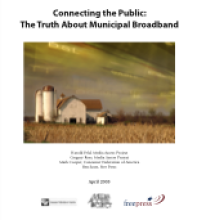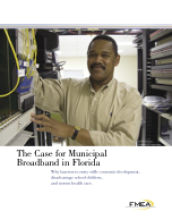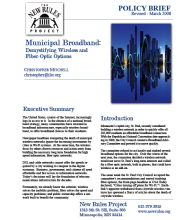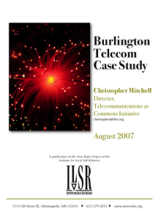
Fast, affordable Internet access for all.




The Municipal & Utility Guidebook to Bringing Broadband Fiber Optics to Your Community is a free, comprehensive guide to the economic and quality-of-life benefits of robust fiber infrastructure. It examines in detail four communities that have successfully deployed fiber-to-the-home (FTTH) services to their citizens and businesses. “This guidebook helps government leaders build a strong case for investing in FTTH infrastructure,“ said Alan Shark, Executive Director of PTI. “With thorough analysis, interviews and painstaking research, it sets forth strategies that, if followed, will help American communities whose broadband needs are not being met by current market dynamics to prosper in the information age.“

The United States, creator of the Internet, increasingly lags in access to it. In the absence of a national broadband strategy, many communities have invested in broadband infrastructure, especially wireless broadband, to offer broadband choices to their residents. Newspaper headlines trumpeting the death of municipal wireless networks ignore the increasing investments by cities in Wi-Fi systems. At the same time, the wireless focus by others diverts resources and action away from building the necessary long term foundation for high speed information: fiber optic networks. DSL and cable networks cannot offer the speeds required by a city wishing to compete in the digital economy. Business, government, and citizens all need affordable and fast access to information networks. Today's decisions will lay the foundation of telecommunications infrastructure for decades. Fortunately, we already know the solution: wireless solves the mobility problem; fiber solves the speed and capacity problems; and public ownership offers a network built to benefit the community.

Burlington Telecom, a city department in the largest city of Vermont, offers a world class fiber-to-the-home network offering cable television, fast broadband, and telephone services. This case study explains how they did it.
ILSR issued a report in 2011 that updates this case study: Learning from Burlington Telecom: Some Lessons for Community Networks